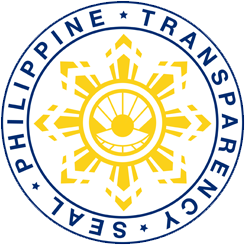Written by Charisma Love B Gado
There are far memories worth recalling. They enkindle inspiration especially when the country is zealous in achieving its most elusive dream – to be rice-self-sufficient.
Old records attest that in 1789, Pampanga exported 28,307 piculs (some 34,000 cavans) of rice with the de facto opening of Manila’s port to world trade. More recently, through Green Revolution campaign, the country attained rice self-sufficiency in the mid-1970s.
This goal of providing Filipinos with enough rice led to the declaration of 2013 as the National Year of Rice (NYR) through Proclamation No. 494 signed late last year by President Benigno S. Aquino III. NYR2013 is an advocacy campaign that aims to lessen rice wastage, promote the right way of eating rice for better health, and increase rice yield.
With the theme Sapat na Bigas, Kaya ng Pinas, the campaign is a component of the Food Staples Sufficiency Program and is being implemented by the Department of Agriculture and Philippine Rice Research Institute (PhilRice). It enjoins everyone, especially the farmers, public, and policymakers in realizing the country’s goal of producing adequate enough rice.
Under the campaign, farmers are encouraged to adopt efficient production technologies such as the use of better inbred and hybrid rice to increase their harvest. A minimum yield increase of 1mt/ha using hybrid rice in the 800,000 ha irrigated rice areas in the country can result in an additional rice production of 1.6 mt of palay.
The public or the rice consumers are also asked to reduce rice wastage and eat right amount and form of rice. Statistics show that each Filipino wastes 2 tablespoons of cooked rice every day. When not wasted, this could result in import savings as high as P6.2 billion and could feed 2.6 million hungry Filipinos in a year.
To improve health, nutritionists recommended balance diet, which include only ¼ cup of rice and more protein, fruits, and vegetables. This recommendation is unlike the normal Filipino meal heaping with rice, which could lead to occurrence of cancer and heart-related diseases. Trying out other food staples such as banana, sweet potato, and corn are also recommended because they are better sources of carbohydrates and more nutritious than rice.
Brown rice also contributes to better health because it is a good source of fiber, magnesium, zinc, and vitamin B6. Harvard researchers say that eating 50g of brown rice a day lowers the risk of Type 2 diabetes by 36%.
Eating brown rice thrice a month would also decrease rice importation by an average of 50,000 mt a year because of its higher milling recovery.
Meanwhile, the policymakers can help in the campaign through creating or reinforcing policies that would support productivity among farmers and reduce rice wastage.
Can we attain rice self-sufficiency? The declaration of NYR 2013 signaled the more intensified effort to achieve the goal. Let’s be committed in helping increase rice harvest, reducing rice wastage, diversifying carbohydrate sources, and eating healthier form of rice.




